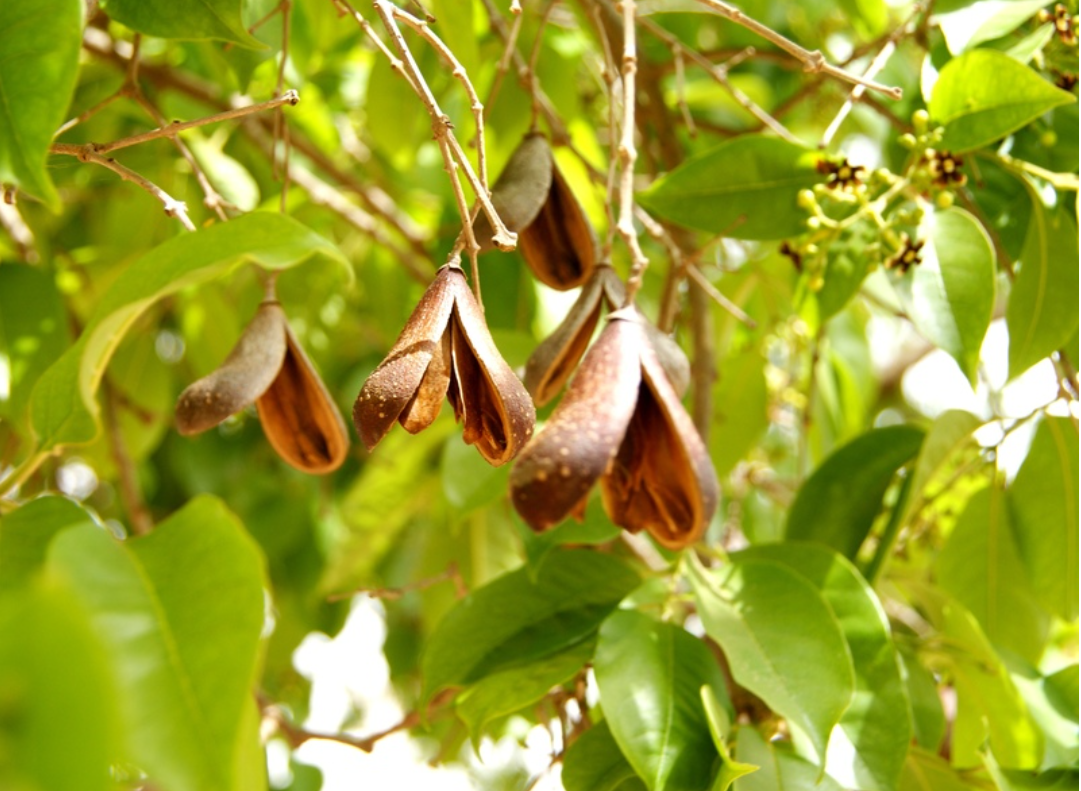Schrebera arborea

|
|
Schrebera arborea Common Names: White-heart tree, African teak Scientific
Classification Kingdom: Plantae Clade: Tracheophyta Class: Magnoliopsida Order: Lamiales Family: Oleaceae Genus: Schrebera Species: S. arborea Synonyms: Schrebera
chevalieri Hutch. & Dalziel; Schrebera macrantha Gilg & G. Schellenb.;
Schrebera macrocarpa Gilg & G. Schellenb. (according to taxonomic
databases) (Kew Science, n.d.). Morphological Description · Height: Deciduous tree typically 18–35 m tall; occasionally reaching
40 m. (JSTOR Global Plants, 1912; Useful Tropical Plants, n.d.) · Stems & Bark: Thin smooth bark, pale yellow-white or
grey-brown; bole may be buttressed or fluted up to 2.5 m, 50–80 cm diameter; branchlets
glabrous with prominent lenticels. (JSTOR Global Plants, 1912) · Leaves: Simple, broadly elliptic to oblong-elliptic, 5–17 cm long ×
3–10 cm wide; subacute to shortly acuminate apex; rounded or cuneate base; dark
green above, paler beneath. · Flowers: White to creamy-white, ~1–2 cm across, in terminal or
axillary panicles; corolla lobes sometimes with chocolate-purple hairs; sweet
fragrance; blooming in rainy seasons. (Burkill, 1997) · Fruit: Ellipsoid to pear-shaped woody capsule 5–7 cm long, 3–4 cm wide;
thick woody valves split to release winged seeds; green when immature, turning
brown when ripe; seed dispersal via wind. (Burkill, 1997; Useful Tropical
Plants, n.d.) Distribution and Habitat · Native range: Sub-Saharan Africa from Senegal east to Kenya and south to
Angola and Uganda. (Plants of the World Online, n.d.) · Habitats: Lowland evergreen forest, open woodlands, riverine fringes,
savanna-forest mosaic; 0–1,500 m elevation. (Useful Tropical Plants, n.d.) · Ecological conditions: Rainfall ~1,000–2,500 mm annually,
temperature range ~22-32 °C; soils well-drained, loamy to sandy, pH circa
5.5-7.0. (Burkill, 1997; PROTA, n.d.) · Range in Nigeria: Found in southern oil-palm/cocoa zones;
used for medicinal and timber uses among Yoruba communities. (Burkill, 1997) Ethnopharmacology Schrebera arborea (family Oleaceae) is a tropical African tree
widely used in traditional medicine for treating skin diseases, abdominal pain,
and as a purgative. Scientific studies have shown that its fruits, twigs, and
seeds contain bioactive compounds such as phenolics, flavonoids, alkaloids,
saponins, tannins, and sterols particularly β-sitosterol, kaempferol, catechin,
and apigenin derivatives. These constituents contribute to its notable
antioxidant and gastroprotective activities, demonstrated by strong radical
scavenging effects and significant protection against ethanol and
indomethacin-induced ulcers in animal models. The plant’s extracts have been
reported to reduce oxidative stress markers and enhance antioxidant enzyme levels,
supporting traditional claims of its anti-inflammatory and healing properties. · Gastroprotective & Antioxidant Activity: A study of fruit extracts found major
phytochemical constituents including β-sitosterol (~41.55 %), phenolic
compounds such as gallic acid, caffeic acid, catechin, kaempferol; in rat
models ethanolic extract showed 63.5–80.8% inhibition of experimentally induced
ulcers at 100 mg/kg dose. (Sofidiya et al., 2019) · Phytochemical screening: Woody fruit capsule extracts (aqueous and
n-hexane) of S. arborea were found to contain high levels of alkaloids
(~553 mg/100 g), phenolics (~482 mg/100 g), significant flavonoids, tannins and
anthraquinones; the aqueous extract showed ~95% DPPH scavenging activity.
(Abiona, Oseni & Sodamade, 2024) · Traditional medicinal uses: The fruits, leaves or shoots are used in
some West African traditional remedies for skin infections (children’s scalp),
head fontanelle healing, intestinal worms and wound treatments.
(Ethnopharmacologia PRELUDE database; Quiroz et al., 2014) Phytochemical Constituents Known constituents
include β-sitosterol, gallic acid, caffeic acid, catechin, kaempferol, and
other phenolics and flavonoids in fruit extracts; screening also reveals
alkaloids, tannins, anthraquinones, cardiac glycosides and terpenoids in woody
fruit capsule extracts. (Sofidiya et al., 2019; Abiona et al., 2024) Additional Uses · Timber: Hard durable wood used locally for furniture, carving,
tool-handles, building components. (Orwa et al., 2009) · Ornamental: Planted for its fragrant flowers and attractive form in
urban landscapes in parts of East Africa. (Useful Tropical Plants, n.d.) · Forage & Ecological Role: Leaves browsed by livestock in dry
seasons; helps soil stabilization in degraded sites; supports pollinators.
(Burkill, 1997) ⚠ Toxicity Profile: Although acute toxicity data are limited,
experimental models used fruit extracts up to 2,000 mg/kg (Sofidiya et al.,
2019). Traditional uses suggest safety at moderate exposures, but high doses
and chronic use have not been well studied. Caution advised in pregnancy,
children and individuals with chronic liver or kidney conditions. References
External Links More Pictures |
|
| Compounds of Schrebera arborea | |
| References |